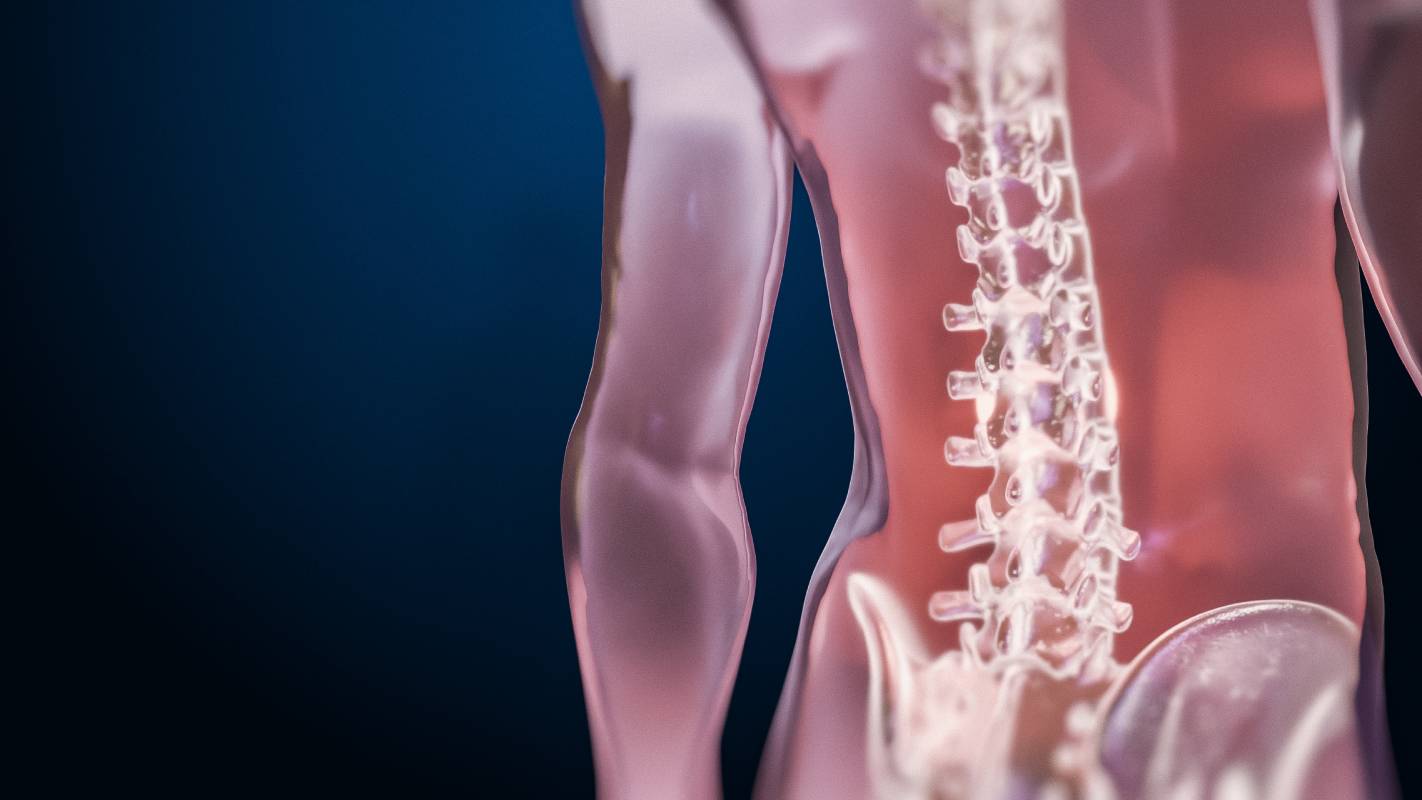Spinal cord stimulation or SCS is a minimally invasive procedure that has been proven to effectively manage chronic pain. The procedure involves implanting a small device that sends electrical impulses to the spinal cord, altering the way pain signals are transmitted to the brain (4). This results in reduced pain sensations and improved physical function for patients with back pain, neuropathic pain, or complex regional pain syndrome. Recent studies have also suggested that spinal cord stimulation may have benefits beyond pain management, such as improving bladder function in patients with spinal cord injury and cognitive function in patients with Parkinson’s disease.
For pain management, SCS is effective across a wide range of conditions. For example, failed back surgery syndrome refers to instances where back pain persists after spinal surgery (2). In these cases, spinal cord stimulation can reduce pain intensity by up to 50% and reduce the use of analgesics by 41-84% (2). SCS can also be combined with or used in place of conventional medical methods of pain management, such as analgesics, nerve blocks, and physical therapy, to improve pain symptoms. As a result, spinal cord stimulation can improve mobility, sleep, and overall quality of life for patients living with debilitating chronic pain and reduce dependency on analgesics and pain medications (4).
While spinal cord stimulation is primarily known for its pain management capabilities, recent research has shown that it may have other potential benefits beyond its current scope. For example, spinal cord stimulation can improve bladder function in patients with spinal cord injuries who cannot empty the bladder voluntarily (5). Epidural spinal cord stimulation in particular can help improve bladder spasticity and capacity, helping reduce bladder dysfunction (5). In general, spinal cord stimulation can be combined with rehabilitation therapy to improve voluntary motor function in patients with spinal cord injuries.
Electrical stimulation of cervical spinal units can also improve arm and hand motor control in patients who were affected by cerebral strokes (3). One study found that SCS could improve upper-limb recovery after stroke. The study showed that continuous electrical stimulation of cervical spinal units improved strength, kinematic, and functional movements, enabling participants to perform movements that they could not perform without spinal cord stimulation (3).
Similarly, spinal cord stimulation may improve mobility and cognitive function in patients with Parkinson’s disease. Parkinson’s disease is a progressive neuropathic condition that results in rigidity, bradykinesia, and cognitive disorders, and the symptoms are often difficult to treat with pharmacological treatments alone (1). In recent studies, dorsal column stimulation improved gait and posture in 75% of patients with Parkinson’s disease.
SCS can even be used to treat patients with chronic angina resulting from coronary artery disease. In one meta-analysis, patients with chronic angina had fewer angina attacks after they were treated using spinal cord stimulation (2).
While spinal cord stimulation is a well-known method for treating chronic pain, promising research suggests that the applications of this procedure go far beyond the treatment of pain alone. Indeed, spinal cord stimulation may have the capacity to improve the quality of life for patients afflicted by hard-to-treat conditions that impact mobility, muscle function, and cognitive thinking.
References
- de Andrade et al., “Spinal cord stimulation for Parkinson’s disease: a systematic review.” Neurosurgical Review, vol. 39, pp/ 27-35, 30 July 2015, doi: 10.1007/s10143-015-0651-1
- Pérez, J. H. Tapias. “Spinal cord stimulation: beyond pain management.” Neurología (English Edition), vol. 37, no. 7, Sept 2022, pp. 586-595, doi: 10.1016/j.nrleng.2019.05.007
- Powell et al. “Epidural stimulation of the cervical spinal cord for post-stroke upper-limb paresis.” Nature Medicine, 20 Feb 2023, doi:10.1038/s41591-022-02202-6
- Sivanesan, Eellan. “Spinal Cord Stimulator.” Johns Hopkins Medicine, www.hopkinsmedicine.org/health/treatment-tests-and-therapies/treating-pain-with-spinal-cord-stimulators
- Steadman, Casey J. and Warren M. Grill. “Spinal cord stimulation for the restoration of bladder function after spinal cord injury.” Healthcare Technology Letters, vol. 7, no. 3, pp. 87-92, doi: 10.1049/htl.2020.0026
